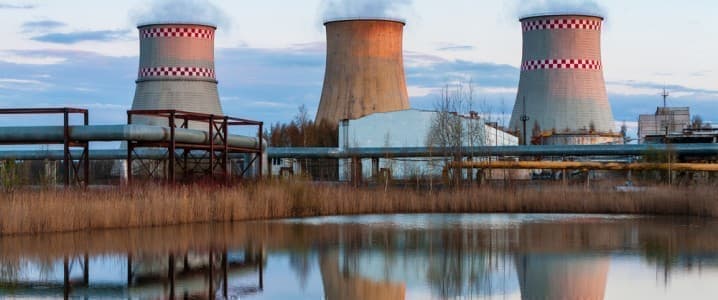Nuclear energy had been falling further and further out of favor amid falling costs for renewable energy installations. But suggestions of its death have been highly exaggerated. The $1-trillion bipartisan deal that the Senate approved earlier this month envisages $6 billion to support nuclear power. And some utilities are considering mini reactors to support their emission reduction efforts. There is perhaps no better proof that nuclear power would be needed in the net-zero world than the fact that the infrastructure bill—which runs for 2,700 pages—seeks to support existing nuclear plants that are becoming uneconomical in competition with cheap gas and renewables. Apparently, these projects need to be made economical again in order to secure future electricity supply for an economy that, if plans pan out, will run overwhelmingly on electricity.
The bill also includes financing for new nuclear reactors—small, modular ones. Small modular reactors appear to be growing in popularity as an alternative to the huge and expensive nuclear reactors of the past.
There is just one problem with small nuclear reactors. They have yet to be approved for deployment.
The Department of Energy last year set aside $3.2 billion over seven years to develop small modular nuclear reactors, the Wall Street Journal’s Elena Shao wrote in a recent article. A number of such projects are being tested in the United States and elsewhere, but they have yet to pass regulatory reviews that would give them the stamp of approval necessary to start building the actual reactors. According to the article, this is unlikely to happen before 2030. Worse still, the modular reactors have to prove cost-effective to have a future.
China is a step ahead, it seems. Earlier this year, state-owned China National Nuclear Corporation started the construction of the world’s first small modular nuclear reactor. The project, Linglong One, has passed the safety review of the International Atomic Energy Agency. When completed, it could cover the energy needs of over half a million households. The Linglong One reactor is the fruit of a decade of research into small modular nuclear reactors.
“Advanced SMRs offer many advantages, such as relatively small physical footprints, reduced capital investment, ability to be sited in locations not possible for larger nuclear plants, and provisions for incremental power additions,” the U.S. Energy Department says. “SMRs also offer distinct safeguards, security, and nonproliferation advantages.”
They also appear to complement wind and solar power installations. In fact, they might prove to be a necessity if the net-zero scenario is to play out.
“Comprehensive decarbonization by 2050 is a gargantuan undertaking that will require the full range of low carbon energy sources,” Henri Paillere, head of the IAEA’s Planning and Economic Studies Section, said earlier this year at an industry event. “We will need massive amounts of low carbon electricity, heat and hydrogen, and nuclear power can contribute to producing all these provided there is clear policy support.”
Of course, the IAEA is unlikely to speak against nuclear energy.
Here’s what the International Energy Agency, a staunch and increasingly vocal supporter of renewable energy, has to say about nuclear. It claims the world’s nuclear power capacity additions need to double on an annual basis for the agency’s sustainable development scenario to work out.
Related: Big Oil Continues To Ramp Up Investments In South America
A fact not widely publicized about nuclear power is that it is the second-largest low-carbon source of electricity on a global scale. France, for instance, relies on nuclear power for more than two-thirds of its energy needs, and its energy system has a lower carbon footprint than Germany’s, despite the latter’s abundant wind and solar capacity.
Nuclear, in other words, works.
And yet criticism remains strong, as does the fear of a meltdown despite technological advancements. There is some rational basis for this fear: nuclear reactor meltdowns may be extremely rare—and they are—but when they do happen, the fallout is huge. And yet, just like solar panel technology, nuclear reactor technology has been evolving, with safety being a top priority.
So, let’s say nuclear is actually a safe way to produce electricity and produce it reliably, 24/7. How cost-effective is it? It depends. The WSJ Shao writes that TerraPower’s Natrium reactor, with a capacity of 345 MW, will cost about $1 billion, producing electricity at a levelized cost of between $50 and $60 per MWh, according to a company spokesman. This compares with a cost of $44 to $73 per MWh for gas-fired power plants.
So, Natrium, for one, is comparable to the biggest competitor of nuclear energy. Other nuclear projects may soon become competitive if the clean electricity standard bill recently proposed by a group of Democratic senators becomes a law. This standard would punish emitters and reward low-carbon electricity producers, which would certainly tip the scales in favor of nuclear—small and modular, or otherwise.
By Irina Slav for Oilprice.com
More Top Reads From Oilprice.com:
- Big Oil Unjustly Under Fire For ‘Dirty’ Hydrogen
- China’s Industrial Slowdown Could Kill The Commodity Rally
- Has The Oil Market Learned To Live With Covid?

















